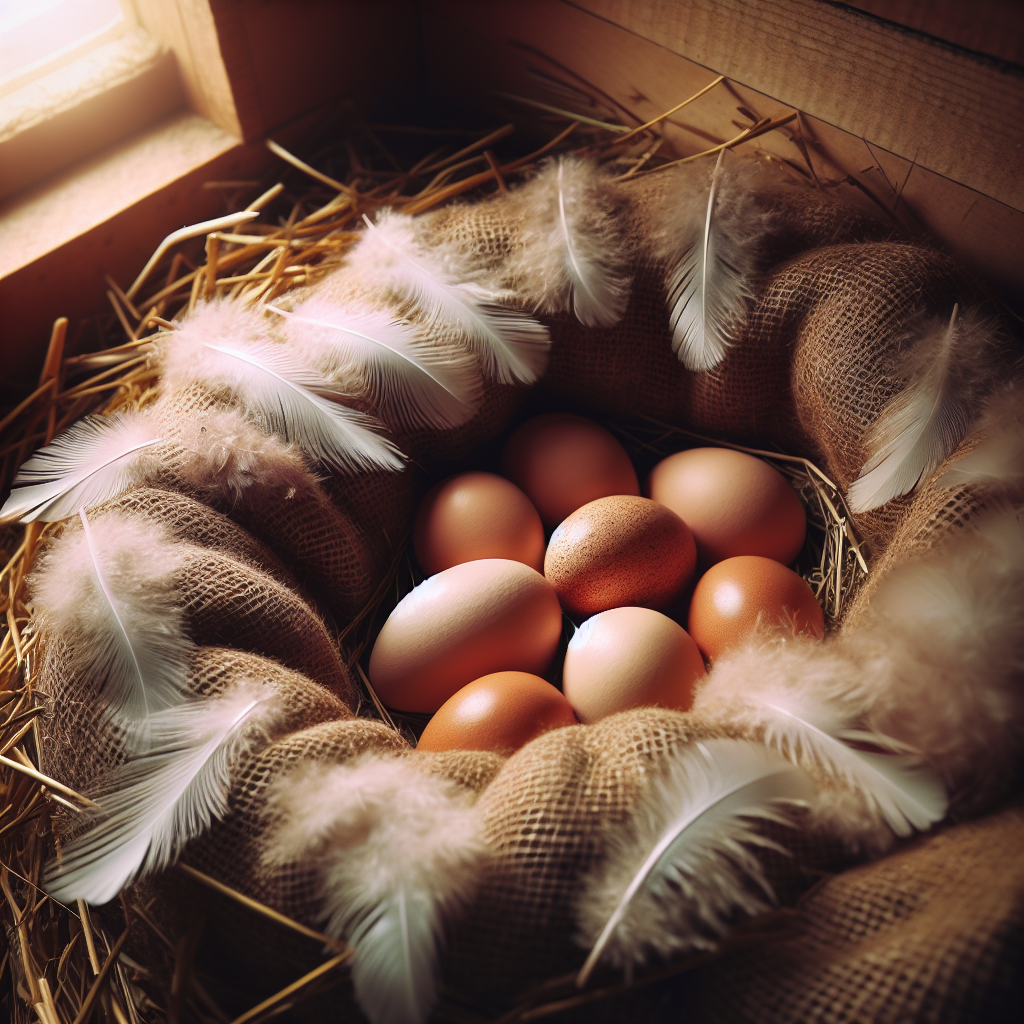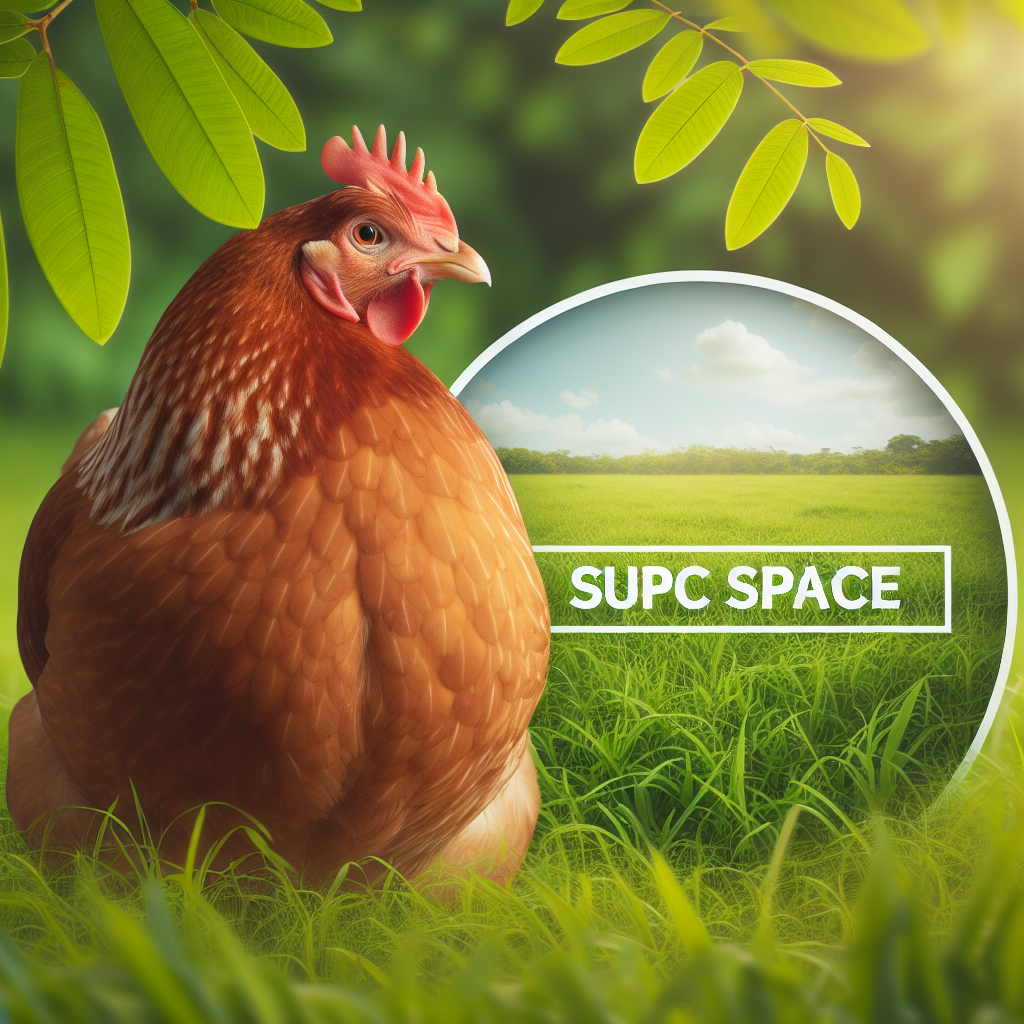Have you ever wondered how the space requirements for indoor and outdoor chicken setups differ? Whether you’re a seasoned chicken keeper or just starting out, understanding the space needs of your feathery companions is crucial for their well-being. In this article, we’ll explore the variations in space requirements between indoor and outdoor setups, allowing you to make informed decisions when it comes to providing the best environment for your chickens. So, let’s dive into the fascinating world of chicken housing and discover how to optimize their living spaces!
Space Requirements for Indoor Chicken Setups
Roosting Space
For indoor chicken setups, it is important to provide enough roosting space for your chickens to comfortably perch and sleep. Chickens naturally prefer to sleep on roosts, elevated off the ground, to feel safe and secure. The general rule of thumb is to provide at least 6-10 inches of roosting space per chicken. This allows them to spread their wings and move around comfortably while resting.
Nesting Space
Indoor chickens will also need nesting spaces where they can lay their eggs. Each nesting box should ideally be about 12×12 inches in size and located in a quiet and secluded area. It is recommended to have one nesting box per 3-4 chickens to ensure that there is enough space for each hen to lay her eggs in peace.
Feeding Space
When it comes to feeding space, indoor chickens require enough room for all chickens to eat simultaneously without feeling crowded. A good rule of thumb is to provide at least 4-6 inches of feeding space per chicken. This allows them to comfortably access their food and water without having to compete with each other.
Exercise Space
While indoor chickens may not have access to vast outdoor areas, it is still important to provide them with some exercise space. This can be achieved by setting up small enclosed areas where they can freely move around and stretch their wings. Aim for at least 3-4 square feet of exercise space per chicken to ensure they have enough room to move and engage in natural behaviors.
Ventilation and Air Quality
Proper ventilation is crucial in indoor chicken setups to maintain good air quality and reduce the risk of respiratory issues. Provide windows or vents to allow fresh air to circulate and prevent the buildup of ammonia and other harmful gases. It is also important to keep the coop clean and well-maintained to minimize odors and promote a healthy living environment for your feathered friends.
Lighting
Indoor chicken setups may lack natural sunlight, so it is important to supplement with appropriate lighting. Chickens require about 14-16 hours of light per day to encourage optimal egg production. Use artificial lighting sources to ensure they receive the necessary amount of light. Be sure to set up the lighting system in a way that mimics natural daylight patterns, with a gradual decrease in brightness during the evening.
Space Requirements for Outdoor Chicken Setups
Coop Size
When it comes to outdoor chicken setups, the size of the coop is vital. Chickens need enough space to move around comfortably, spread their wings, and engage in natural behaviors. The general recommendation is to provide a minimum of 4-5 square feet per chicken in the coop. This allows for adequate space for chickens to roost, nest, and seek shelter from the elements.
Run Size
Outdoor setups offer the advantage of allowing chickens to roam and forage outside the coop. A run is an enclosed outdoor space that provides protection from predators while still giving chickens access to fresh air and sunshine. The recommended rule of thumb for the run size is to allow for about 8-10 square feet per chicken. This ensures they have enough space to move around, scratch, and engage in natural behaviors.
Perches and Roosting Space
Just like in indoor setups, outdoor chickens also need perches and roosting space. This gives them a sense of security and allows them to rest comfortably. Provide roosting bars or platform perches within the coop and run, ensuring a minimum of 6-10 inches of roosting space per chicken. Having multiple perching options throughout the chicken space will allow them to choose their preferred spots.
Nest Boxes
Outdoor chickens still require nest boxes to lay their eggs. The recommended size and quantity of nest boxes for outdoor setups are the same as for indoor setups. Each nest box should be about 12×12 inches in size, and one nest box per 3-4 chickens is ideal. Place them in a well-protected and secluded area within the coop to provide a safe and comfortable space for egg-laying.
Feeding and Watering Stations
Outdoor chickens should have designated feeding and watering stations to ensure they have easy access to food and water. It is important to position these stations in a clean and protected area to prevent contamination and spoilage. Provide enough feeding space to allow all chickens to eat simultaneously without feeling crowded, following the same rule of providing 4-6 inches of feeding space per chicken as in indoor setups.
Protection from Predators
Outdoor setups come with the challenge of protecting your chickens from predators. Make sure the coop and run are securely fenced and have appropriate mesh size to prevent predators from entering. Reinforce the coop with sturdy materials and consider adding predator-proof measures such as electric fencing or an underground apron to deter digging predators. Regularly inspect and reinforce the fencing to ensure the safety of your flock.
Factors to Consider When Planning Chicken Space
Number of Chickens
The number of chickens you plan to keep will have a direct impact on the space requirements. More chickens will obviously require more space to ensure their comfort, health, and overall well-being. Consider the number of chickens you have or intend to have when calculating the appropriate space for both indoor and outdoor setups.
Breed Size
Different chicken breeds come in various sizes, and this should be taken into account when planning space requirements. Bigger breeds will naturally require more space to move around comfortably compared to smaller breeds. Research the specific breed sizes and factor it into your calculations to ensure you provide adequate space for your chickens.
Climate and Weather Conditions
The climate and weather conditions in your area play a significant role in determining the space requirements for your chickens. In hotter climates, chickens need enough space for ventilation and shade to prevent heat stress. In colder climates, extra space is needed to prevent overcrowding, as chickens may huddle together to keep warm. Consider the specific climate and weather conditions in your region and adjust the space accordingly.
Available Land
The amount of available land you have will dictate the size and extent of your chicken space. If you have limited land, you may need to optimize space, especially in indoor setups, by utilizing vertical space or incorporating multi-level designs. If you have a larger property, you have more flexibility in providing ample space for your chickens to roam and explore.
Future Expansion
When planning your chicken space, it is wise to consider potential future expansion. If you think you might increase the size of your flock or make changes to your setup in the future, plan your space accordingly. It is always better to have a little extra space than to find yourself constrained and needing to make adjustments down the line.
Budget Constraints
Budget constraints can also affect your chicken space planning. Larger setups with more space can be more costly to construct and maintain. Consider your budget and work within its limitations to ensure you create an appropriate and comfortable living space for your chickens.
Benefits of Indoor Chicken Setups
Year-round Production
One of the major benefits of indoor chicken setups is the ability to maintain year-round egg production. By controlling the environment, including lighting and temperature, you can provide the ideal conditions for consistent egg-laying throughout the year. This is especially advantageous in regions with extreme weather conditions or shorter daylight hours during certain seasons.
Controlled Environment
An indoor setup allows for greater control over the chicken’s living environment. You can regulate temperature, protect against extreme weather conditions, and maintain a more consistent and stable environment. This control can be especially valuable in climates with harsh winters or excessive heat.
Easy Monitoring and Maintenance
With chickens kept indoors, it is easier to monitor their health, behavior, and general well-being. You have better visibility and accessibility, making it simpler to detect any issues or signs of illness. Additionally, indoor setups often require less maintenance and cleaning compared to outdoor setups, as waste can be more easily contained and managed.
Reduced Predation Risks
Indoor setups significantly reduce the risks of predation. Without access to outdoor areas, chickens are protected from predators such as foxes, raccoons, or hawks. This brings peace of mind, especially in areas with a higher prevalence of predatory animals.
Benefits of Outdoor Chicken Setups
Natural Foraging
One significant advantage of outdoor setups is that chickens can engage in natural foraging behaviors. They have the opportunity to explore and scratch the ground for insects, seeds, and plants, which contributes to a more balanced and varied diet. This natural foraging behavior is not only enjoyable for the chickens but also provides mental stimulation and enrichment.
More Space and Freedom
Outdoor setups offer chickens more space and freedom to move around compared to indoor setups. They have the ability to roam, dust bathe, and engage in natural behaviors such as sunbathing and stretching their wings. This increased space gives them a more fulfilling and comfortable living environment.
Natural Sunlight
Access to natural sunlight is important for the overall health and well-being of chickens. Outdoor setups allow chickens to bask in the sun, which provides essential vitamin D and contributes to their overall vitality. Natural sunlight also helps regulate the chicken’s internal clock, promoting healthier sleep patterns and egg-laying cycles.
Improved Exercise and Mental Stimulation
Outdoor setups provide ample opportunities for exercise and mental stimulation. The ability to run, flap their wings, and explore the outdoor environment keeps chickens active and engaged. These activities promote healthy muscle development, proper weight management, and a more content and fulfilled life.
Challenges of Indoor Chicken Setups
Limited Space and Freedom
The main challenge of indoor chicken setups is the limited space and freedom for chickens to move around. Chickens are naturally active animals and require room to exercise and stretch their wings. While indoor setups can provide enough space for basic needs, they cannot match the space and freedom of outdoor setups.
Odor and Waste Management
In indoor setups, waste management can be more challenging. The odor from accumulated droppings and waste can become an issue if proper ventilation and cleaning protocols are not in place. Regular cleaning, proper waste disposal, and ensuring adequate ventilation are essential for maintaining good air quality and reducing unpleasant odors.
Ventilation and Air Quality
Due to the confined nature of indoor setups, proper ventilation is crucial to maintain good air quality. Poor ventilation can lead to high humidity, ammonia buildup, and respiratory issues for chickens. It is important to ensure that the coop has sufficient windows, vents, or fans to allow for proper air circulation and prevent the accumulation of harmful gases.
Potential Health Risks
In indoor setups, chickens are in closer proximity to each other, which increases the risk of diseases spreading more easily. Close living quarters make it easier for parasites, bacteria, and viruses to spread among the flock. Regular health checks, proper hygiene practices, and preventive measures such as vaccinations are crucial to minimize the risk of disease transmission.
Challenges of Outdoor Chicken Setups
Predator Threats
Outdoor setups come with the constant risk of predator attacks. Predators such as coyotes, raccoons, and snakes can pose a threat to free-ranging chickens. It is important to implement appropriate predator-proof measures, such as secure fencing and regularly patrolling the area to ensure the safety of the flock.
Weather and Environmental Factors
Outdoor chickens are more exposed to the elements, which can pose challenges during extreme weather conditions. Harsh winters, excessive heat, or heavy rains can have a significant impact on the well-being of chickens. Providing adequate shelter, shade, and protection from the elements is essential to keep chickens comfortable and healthy.
Difficulty Monitoring and Maintenance
Maintaining an outdoor setup can be more challenging than an indoor setup. Chickens have more space to explore, making it more difficult to monitor their behavior and health on a regular basis. Regular inspections, ensuring the structural integrity of the coop and run, and regular cleaning routines are necessary to keep the outdoor setup in optimal condition.
Risk of Disease Transfer
Outdoor setups have a higher risk of disease transmission, as chickens have the potential to come into contact with wild birds, insects, and other animals. This increases the risk of carrying or contracting diseases that can impact the health of the flock. Proper biosecurity measures, such as quarantining new chickens and regularly cleaning and disinfecting the coop, are crucial in mitigating the risk of disease transfer.
Considerations for Combining Indoor and Outdoor Space
Integration Strategies
Combining indoor and outdoor space is a popular choice for chicken owners who want to provide the benefits of both setups. Integration strategies can include using a coop with an attached run, providing access between indoor and outdoor areas, or utilizing movable enclosures such as chicken tractors. These integration strategies allow chickens to enjoy the benefits of both indoor and outdoor setups while ensuring their safety and comfort.
Access and Security Measures
When combining indoor and outdoor space, it is important to have appropriate access and security measures in place. This can include secure doors, ramps, or tunnels that allow chickens to move between the indoor and outdoor areas while keeping them safe from predators. Consider the layout of the space and design access points that are convenient for both chickens and the caretaker.
Transitioning and Adaptation
Chickens need time to adapt to changes in their environment. When introducing them to a combined indoor and outdoor space, it is important to allow for a period of adjustment. Gradually introduce outdoor access to prevent overwhelming or stressful situations for the chickens. Monitor their behavior closely during the transition period to ensure they are comfortable and adapting well to the new setup.
Designing an Ideal Chicken Space
Space Calculations
Whether indoor, outdoor, or combined, calculating the appropriate space for your chickens is crucial for their welfare. Consider the guidelines mentioned earlier, such as recommended square footage per chicken for the coop and run, as well as the space requirements for roosting, nesting, and feeding. Proper planning and accurate space calculations will help ensure your chickens have enough room to live and thrive.
Appropriate Materials and Construction
Choosing the right materials and construction methods is key to building a safe and comfortable chicken space. Use materials that are durable, easy to clean, and provide adequate insulation. Ensure that the coop and run are well-built, secure, and resistant to predators. Pay attention to details such as proper ventilation, easy access for cleaning, and appropriate roofing to protect against the elements.
Perches, Nest Boxes, and Feeding Stations
Provide appropriate perches for chickens to roost comfortably. Choose materials with a suitable diameter and texture to prevent foot injuries. Place nest boxes in a secluded area, ensuring they are easily accessible for egg collection. Designate specific areas for feeding and watering stations, considering the number of chickens you have and ensuring enough space for everyone.
Proper Ventilation and Lighting
Good ventilation is essential for maintaining good air quality, regulating temperature, and reducing the risk of respiratory issues. Incorporate windows, vents, or fans to allow for proper air circulation. Consider using natural lighting whenever possible, supplemented with artificial lighting as needed. Mimic natural daylight patterns to ensure chickens receive the right amount of light for optimal health and egg production.
Optimal Use of Space
Regardless of the type of chicken setup, making the most of the available space is important. Consider utilizing vertical space by installing roosting bars, perches, or nesting boxes at different heights. Use movable enclosures, such as chicken tractors, to maximize outdoor space utilization. Incorporate features that provide mental stimulation, such as hanging toys or platforms for chickens to explore and interact with.
Conclusion
Creating the ideal chicken space involves careful planning, consideration of various factors, and understanding the specific needs of your chickens. Whether you opt for an indoor, outdoor, or combined setup, providing adequate space is essential for their well-being. By considering the space requirements, benefits, and challenges of each setup, you can create a comfortable and safe environment where your chickens can thrive.




